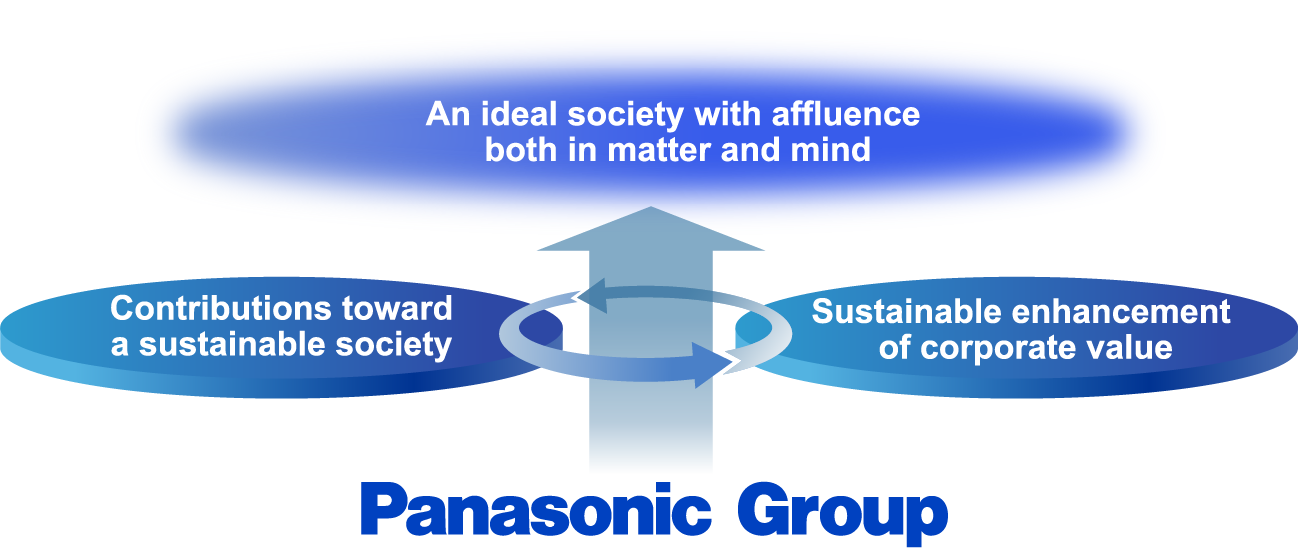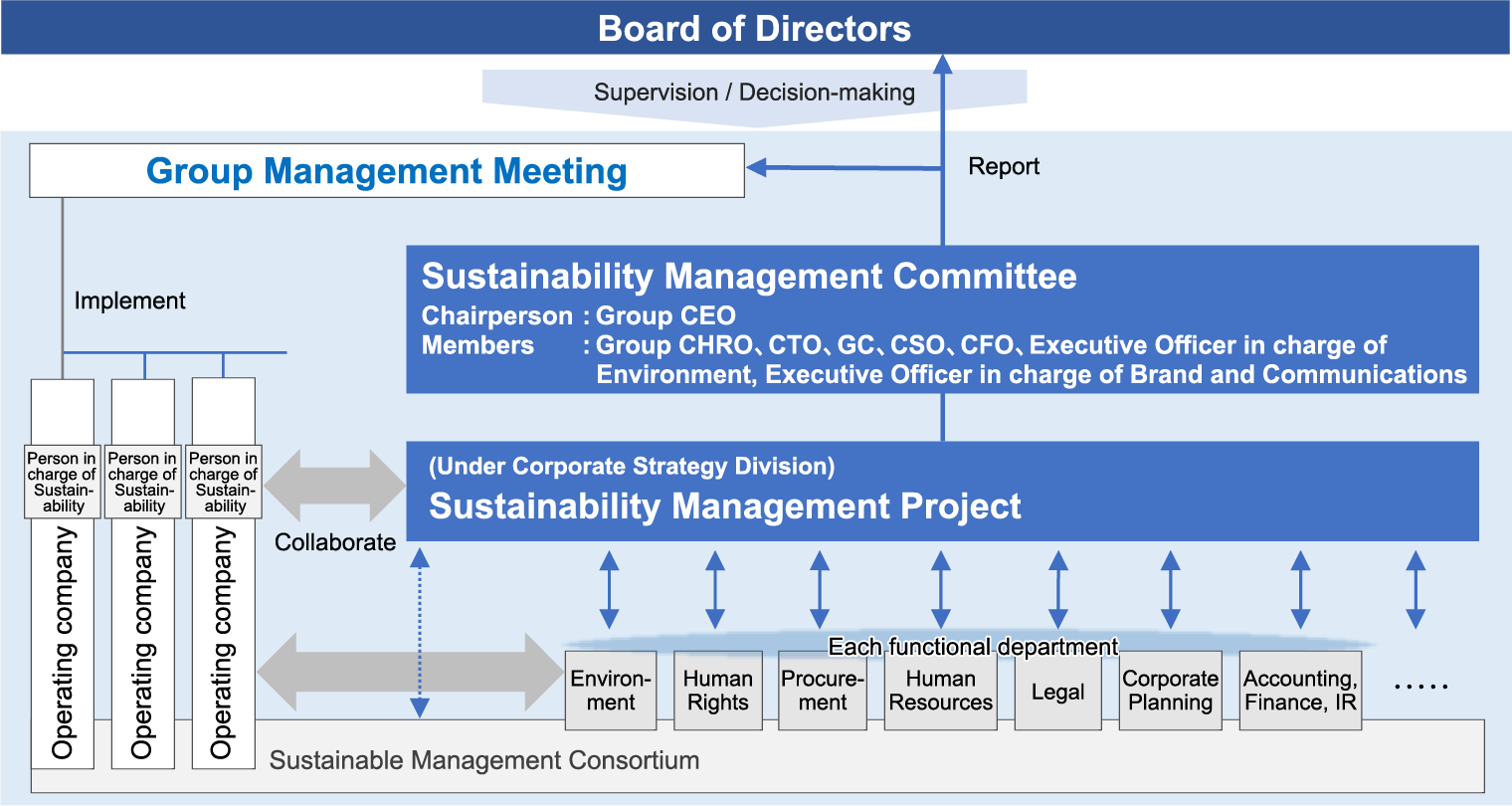Sustainability Management
Basic Philosophy & Structure
Basic Philosophy
The Panasonic Group’s mission is to achieve “an ideal society with affluence both in matter and mind.” This is grounded in the dream of achieving prosperity both in matter and mind, which is the ideal state of society that our founder Konosuke Matsushita envisioned and pursued. In 1932, the founder set forth a 250-year plan, consisting of ten successive phases of 25 years, to reach the ideal society he envisioned.
For our Group, “sustainability management” is the pursuit of this mission.
We will strive to address social issues through our business activities and contribute to a more prosperous and sustainable society thereby enhancing our corporate value. Through these consistent efforts, we aim to achieve our goal to realize “an ideal society with affluence both in matter and mind.”
To achieve this, we will always squarely address the social issues of the time and continue to create new value through our business activities. At the same time, we will also focus on building and strengthening a sustainable management foundation that will enable sustainable value creation.
As a public entity of society, the Panasonic Group will share this mission and philosophy with all of its stakeholders, and together we will pursue the ideal society we envision.

注:マテリアリティには、リスクマネジメント活動で決定した「グループ重要リスク/ PHD重要戦略リスク」と類似の名称の項目がありますが、目的・特定プロセスが異なるため、対応する取り組みが一部異なっています。
リスクマネジメント活動については、P134をご確認ください。
Structure for Promoting Sustainability Management
The Group has established the Sustainability Management Committee under the supervision of the Board of Directors for the purpose of discussing, directing, and managing policies, strategies, indicators, and targets regarding essential themes related to sustainability. The Committee meets once a month, in principle.
The Sustainability Management Committee is chaired by the Group CEO and comprises the Group CHRO, the Group CTO, the Group GC, the Group CSO, the Group CFO, and Group company directors and executive officers.
Matters deliberated and decided by the Sustainability Management Committee are reported to the Board of Directors depending on their content. Moreover, any matters that need to be addressed by operating companies are shared and disseminated throughout the entire Group via the Group Management Meeting and other avenues. Meanwhile, to ensure the effectiveness of the Board of Directors’ oversight of sustainability-related matters, we have established “sustainability management” as one of the skills and knowledge that the Board of Directors should possess and have set non-financial indicators for the performance-based portion of compensation for directors.
In FY2025, to strengthen the formulation and promotion of policies, strategies, and measures related to the Group’s sustainability management, we established a new cross-functional Sustainability Management Project within Panasonic Holdings Corporation, built a sustainability promotion structure for each operating company, and strengthened the collaboration system throughout the Group. There is also the Sustainable Management Consortium, which is a voluntary-participation, flat platform for information exchange where employees from across the Group come together and discuss various sustainability topics. Most are members of teams engaged in addressing environmental-related issues. The Sustainability Management Project team also participates and cooperates in the running of this consortium.
The main items discussed by the Sustainability Management Committee in FY2025 are as follows:
- Setting of indicators and targets related to materiality
- Consideration of operating companies’ mid-term targets related to sustainability
- Compliance with sustainability-related laws and regulations in Europe (CSRD, CSDDD and Battery Regulation)
- Review of value creation process and materiality.
Structure for Promoting Sustainability Management (As of June 2025)
Structure for Promoting Sustainability Management
(As of June 2025)

• Group Management Meeting: Chaired by Group CEO, consisting of about 20 Executive members including the presidents of operating companies, heads of each function (held monthly in principle)

